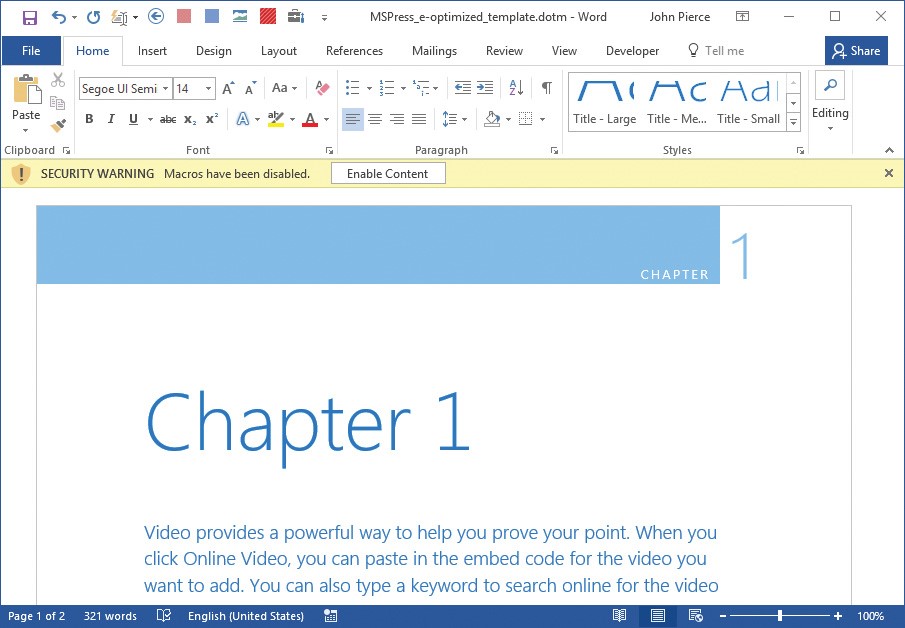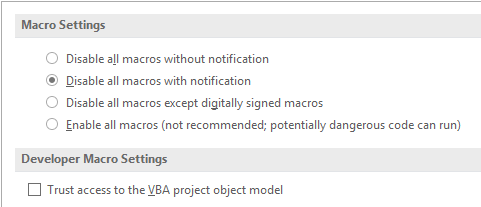Objective 1.1: Manage Documents And Templates
- 1.1.1 Modify existing templates.
- 1.1.2 Copy custom styles, macros, and building blocks to other documents or templates.
- 1.1.3 Manage document versions.
- 1.1.4 Compare and combine multiple documents.
- 1.1.5 Link to external document content.
- 1.1.6 Enable macros in a document.
- 1.1.7 Change default program settings
- 1.1.7a Display hidden ribbon tabs.
- 1.1.7b Change the application default font.
Enable macros in a document
Macros can be used to automate operations and repetitive tasks in Word. For example, you can create a macro that applies a series of settings to an image that change the image’s size and other formatting attributes all at once. Without the macro, you would need to select each setting separately.
Macros are created in a programming language known as Microsoft Visual Basic for Applications (VBA) and are stored in a VBA project that is associated with a document or a template. Because macros contain programming code, they can pose a security threat if the code they contain is malicious.
See Also: For information about creating macros, see “Objective 4.1: Create and modify building blocks, macros, and controls.”
To address this possibility, Word disables macros by default and notifies you with a security warning when a document you open contains a macro. You need to specifically enable the macros to use them in the document.

Word displays a security warning when you open a document that contains macros
In addition, you cannot save a macro in a document that uses the standard Word document format (.docx). When you start to save the document, Word displays a message telling you that the VBA project cannot be saved with the file.

Use the macro-enabled file type when you save a document that contains a macro
To include the macro in the document, you need to save the file in the .docm file format, which is designed to include macros. Similarly, if you need to include a macro in a Word template, save the template in the .dotm format (for Word Macro-Enabled Template) instead of the standard Word Template (.dotx) format.
To enable macros in a document
![]() In the message bar that Word displays when you open the document, click Enable Content.
In the message bar that Word displays when you open the document, click Enable Content.
To change Macro Settings
1. On the File menu, click Options.
2. In the Word Options dialog box, click the Trust Center category.
3. On the Trust Center page, click the Trust Center Settings... button.
4. In the Trust Center dialog box, on the Macro Settings page, select one of the Macro Settings options as appropriate.

5. Click OK to close the Trust Center dialog box.
6. Click OK to close the Word Options dialog box.
To save macros in a document or a template
1. On the File menu, click Save.
2. In the Save As dialog box, in the Save as type list, select Word Macro-Enabled Document (.docm) or Word Macro-Enabled Template (.dotm).
3. Click Save.